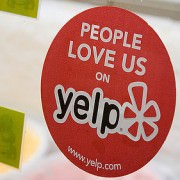Dining Trends: Embracing Positive Change in Private Clubs
After the recession hit in 2007, private clubs had to push through a turbulent economic period worsened by membership decline. The past few years have marked a rebounding period for clubs across the country. Club economics have started to stabilize. But membership interests have drifted from the golf course into new leisure areas. New technologies have helped bridge the gap between changing demographics and more effective club management. As club managers assess what the future looks like for their businesses, tech companies whose focus is hospitality aim to make that future user-friendly.
A Response to Change
At the very end of 2014, CMAA CEO Jeff Morgan spoke about a recovering club industry that was seeing growth in revenue but still struggling to produce growth in initiation fees. These financial benchmarks were weighed against the need to stay relevant and respond to member desires.
Morgan told the web publication We Are Golf, “The industry is changing in response to technology, a move to family-centric culture and overall casualization. Clubs are adapting and evolving to better serve their members.”
As the industry enters a transformative period, it’s important to take a moment and understand where changes can be made and where clubs can better serve their members. It’s also important to know what questions to ask when adopting new technology. We’ve already seen mobile tee time reservation platforms become widely available. But where else can clubs make important changes?
As we’ve seen in the past, the place for change and better service is at the dinner table.
Food and Beverage is an Overlooked Area for Club Growth
Private clubs operate in a unique sector of the hospitality industry. Clubs generate the bulk of their revenue through membership dues and initiation fees. Cost of goods and services in club restaurants is generally subsidized by these dues and fees. But clubhouse dining services are actually a great place to grow revenue. The dinner table is one of the most accessible places to engage members and keep them satisfied.
As clubs shift away from many of the formalities of club life – relaxing dress codes, changing cell phone and mobile device policies – they’re also establishing new features that add value for long standing members and attract potential members.
As clubs find new footholds for revenue and member engagement, food and beverage services will continue to grow as an important marquee feature. And though this hospitality sector is unique, common financial goals of increased sales and revenue growth are necessary benchmarks for Food and Beverage Directors to hit.
Club Dining is Changing
As chefs become celebrities, innovative restaurants become must-try destinations, and the American eater becomes more sophisticated, clubs must respond to new food and beverage trends.
Private clubs have already seen dining rooms become more informal. Craft and local products are replacing old industry standards. Diners are more conscious about healthy eating and high-quality ingredients. This all culminates into an intense interest in the information surrounding what people eat and drink.
This new found interest has created an area of growth for clubs. The chance for growth isn’t just in food, but also in beverages. A recent CMAA presentation on emerging food and beverage trends notes that diners have “more savvy palates – wine list [is] important.”
Beverage programs are high profit centers for independent restaurants. They can also be high profit centers for private clubs. And it’s important to realize: increased revenue doesn’t have to come from much disdained price hike.
Other Options for Increasing Sales than Raising Prices
A trend that club members will (regrettably) become familiar with is menu prices increasing.
A Mcgladrey’s club trend report from July 2015 found that “54% of Florida clubs increased food prices by 4% on average, while 41% of clubs increased beverage prices by 4%.”
This news comes at the expense of members. But there are other ways.
Platforms like digital wine menus have proven to engage guests and drive up sales without price bumps. Uncorkd has found success boosting beverage sales at many private clubs through out the country. Including increasing beverage sales between 30-40% at Congressional Country Club. And raising wine sales by $3,000 a month at Troon Golf’s The Clubs at St. James Plantation.
New customer facing technologies like digital wine menus can add an exciting feature to a beverage program. The ability of digital or iPad menus to display information, photos, and tasting notes gives members the information they want. This has a direct positive impact on sales.
Menu Platforms Can Cut Back Labor Costs
Another way to raise profits in any business is to cut back on the cost of labor. iPad menu management platforms make it easier to manage beverage programs and cut back the costs of printing, time spent revising menus, and maintaining accurate inventory information.
Change is Opportunity
With trends in club dining changing, it shouldn’t create a period of unrest, but rather a time to explore new opportunities for member happiness and revenue growth. As country clubs look to expand on the experiences they offer members, they should embrace new technologies that help them meet the unique expectations of a private club.
Click here for more information on Uncorkd.
- 5 Fall Cocktails to Capture the Flavors of Autumn - September 26, 2018
- How Restaurants Can Ignore Sales and Increase Profits - May 9, 2018
- 2018 Spring Wine Trends - April 18, 2018









